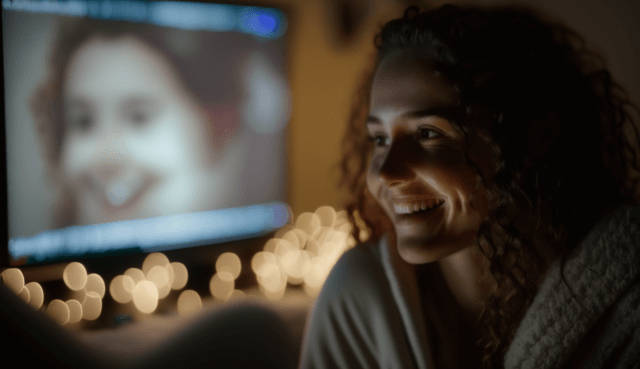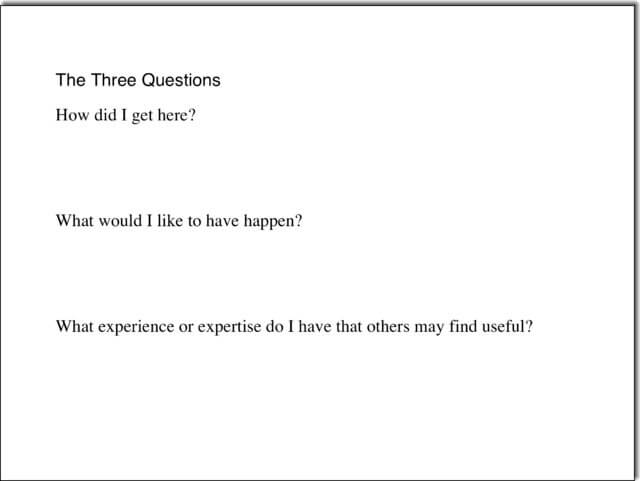
Occasionally, the answer is “yes”.
- A paragraph in a novel unexpectedly hooks your heart.
- An inspirational speaker says something that totally resonates with an audience member.
- The meditation teacher on Zoom looks right at you as they deliver a perfect piece of wisdom.
- A political slogan captures your imagination at the right moment.
And yet, broadcast being personal happens relatively rarely.
- As George Orwell remarked, “In much more than nine cases out of ten the only objectively truthful criticism would be ‘This book is worthless …'”.
- I once heard a motivational speaker whom I found inspirational at the time. Three months later, I couldn’t remember a thing he said.
- The meditation teacher was looking at their camera, not you—and there were 500 other people listening too.
- Millions of people heard the slogan that high-priced consultants crafted to appeal to them.
When people come together at a meeting, an event, or a social, we usually default to broadcast-style experiences. We listen to speakers. We’re assigned to large tables where we can’t quite hear the individuals three chairs away from us. We use formats like theater seating that minimize interpersonal contact. Broadcast modalities like these breed a passive experience. And they are so engrained that we default to them unconsciously.
Which leads to a better question.
Are there better ways of creating personal moments of connection?
Yes, there are. We can gently steer people into opportunities to connect one-to-one, or in small groups. And it’s easy to do. Here are three examples:
David Adler’s Jeffersonian dinner
David Adler, the founder of BizBash, loves to connect people. One of his favorite approaches is to host a Jeffersonian dinner, where guests take turns sharing their answers to a question the host offers.
David often uses the question: What was your first job, and what did you learn from it? Each participant broadcasts their answer to everyone, but only for a few minutes, and the sharing moves around the group. Each story provides opportunities for personal connection, as many of the stories involve common threads and learnings.
Pair share
Pair share (or trio share) is such a simple and effective way to create personal moments of connection I don’t understand why it’s not more widely used. Announce a topic or question to a group, ask people to find a partner, provide a little time for everyone to think of their response, and then give each pair member a minute or so to broadcast/share their thoughts with their partner. Maybe add another minute for the pairs to talk to each other about what they just shared.
Voila! You’ve created an opportunity for everyone in the room to have a short, focused conversation, and maybe a moment of connection with another person (whom they may have never met before). Pair share is quick, so you can run it multiple times while people are together, each time with different partners to create new connections.
The Three Questions
I often use The Three Questions to open a peer conference. (See Chapter 18 of my Event Crowdsourcing book for a full description of this core meeting format.) Like the Jeffersonian dinner, each participant has a short-broadcast time to share their answer to a question—in this case three questions—with an entire group.
There are three things meeting participants really want to know about each other. These three questions allow each person to share their past, present, and future in a way that is appropriate and safe for them with everyone in the group. This sharing provides the foundation for connections to deepen during the conference that follows.
Can broadcast be personal?
Traditional broadcast formats are rarely personal because one person dominates the time. But by breaking broadcast into small segments where many people get to talk, broadcast can become personal, while also fostering multiple moments of new connection.
Try it, you—and the people in the room—will like it!


Pre-connections help. In the early “not called social media” days of listservs, the MIMList (first opened in 1999, with 16k members at peak) for hospitality professionals, allowed wide-ranging discussions. People were invited to introduce themselves. Connections formed. Those going to meetings industry events gathered and brought others into a broader connection.
Prior to that, in an AOL chat room for writers, we did the same.
The joys were accessibility. Dragon (talk to text) was still new and a number of those in the chat had disabilities could easily participate. More, one did not have to disclose more about themselves than they chose.
In all your examples, Adrian, access and safety have to be a key component. And for broadcast messages, let’s change those up!
Thanks.